- Home
- Alec Waugh
Where the Clocks Chime Twice
Where the Clocks Chime Twice Read online
Where the Clocks Chime Twice
A Travel Book by
ALEC WAUGH
To
ANNETTA HART
for whom the tropics are a second home and who was the first to read this book in manuscript
in fondest friendship
Contents
I In Explanation
II The Caribbean
1 The U.S. Virgin Islands
2 The Wicked Baronet
3 ‘Typical Dominica’
4 An Island to be Explored
III The Lebanon
IV Seychelles
1 The Place and the People
2 Seychellois Routine
3 The Beachcomber’s Arms
4 The Collet Incident
5 Praslin
6 The Woman Who Knew Frank Harris
7 Last Days in Mahé
V Ex-British Raj
1 Ceylon
2 The City of the Caliphs
VI Damascus
VII Villefranche-Sur-Mer
I
In Explanation
I Slept Badly my first night in Mahé. The Seychelles islands, of which it is the chief, lie south of the line between the fourth and tenth degrees of latitude. It was late in June, the southeast monsoon was blowing, and the air was humid. When I pulled a sheet over my shoulders, I began to sweat. When I flung it back, the gusty trade wind stabbed against my damp pyjamas. I was mentally and nervously alert; my mind was racing, as it invariably does my first night in a new place. Whenever I fell into a doze, unsynchronised clocks roused me with their chiming.
“I never knew a place with so many clocks,” I remarked next morning.
My hostess laughed. “There’s only one clock here that chimes. The one at the Cathedral.”
“It has an echo, then.”
She laughed again. “It has. Three minutes after it has struck, it strikes again.”
“Whatever for?”
“In case you didn’t get the count first time. You know how people are in this kind of place, always half asleep. They miss the first two strokes, or think they may have done. The first chime is a warning. If they really want to know the time, they can start listening-in three minutes later.”
It was as practical a solution as you could find for the timeless torpor of the tropics. If ever I write a book about this trip, I thought, I’ve got my title, ‘Where the clocks chime twice’.
I went to Seychelles in the summer of 1950. Most of my friends looked surprised when I told them that I was going. They had never heard of them. An obscure and remote possession of the British Crown, a cluster of some ninety islands, a third of the way between Mombasa and Bombay, part granite and part coral, two-thirds of them uninhabited, covering an acreage of one hundred and fifty-six square miles, exporting copra and supporting a population of thirty-five thousand, Seychelles appear in the index of few histories.
Originally French, a dependency of Mauritius, the islands were taken over by the British during the Napoleonic Wars, under a capitulation that allowed their inhabitants to retain their laws and language, their customs and their faith. As a foreign possession, they had had in war-time a nuisance value. But under the Union Jack, safely guarded between Africa and India, they lay outside the radius of big events. War followed war, but they were never ‘news’. It was not surprising that few of my friends who were not philatelists should know about them. Yet chance, for over twenty years, had mapped them on the chart of my curiosity.
In the early 1920s, when I was still held captive to a London desk, a one-time school friend who as a foreign salesman spent half his time abroad would make me envious on each return with the account of his adventures. He was handsome, enterprising with a look of Rudolph Valentino; he had romantic aptitudes. “Well, where was the high spot this time?” I was to ask him once. In Zanzibar, he told me. She was slim and tall, dark-haired and slightly coffee skinned; an eighth part African or maybe Indian; her features had ‘race’; and her wrists and ankles, ‘quelles fines attaches’: she had spoken French with a fascinating singsong accent and for the rest... he made a gesture, a Latin gesture: pursed fingers raised against lips that pouted into a kiss as the hand straightened out and the eyebrows lifted; she was Seychelloise, he said. If any of the others there were like her, that should be a place worth visiting.
A few years later a stranger in a train read on my suitcase the label ‘Martinique’.
“I’ve always wanted to go there, ever since I spent a month in Mahé,” he remarked.
“Where’s Mahé?”
“In Seychelles. It’s the chief island.”
“What’s so particular about it?”
He shrugged. “It’s hard to say. Probably the French atmosphere. The happy-go-luckiness of it all. No one seems to worry about anything.”
Then, again, soon after the second war, I met Sir Arthur Grimble, who had recently retired from his governorship of the Windward Islands. We were discussing Dominica. “Yes,” he said, “there’s no place like it. But you should see Seychelles. They’re unique, too. My years as governor there are the ones I’d soonest have again.”
Finally, during the summer of 1949, twice and possibly for the first time in their history Seychelles made the headlines, once when a company was formed to search for a pirate’s hoard of buried treasure, secondly when the Chief Justice—a man well known in the 1920s as the best cricketer who never played for England—commented so scathingly on the behaviour of a Government official that questions were asked about it in the House of Commons. I’d have to get there some day, I resolved.
My chance came a few months later.
For the previous two years I had been working on a biography of Sir Thomas Lipton. The project was proving more profitable than I had expected. Early in the year I should be finding myself both with time on my hands and money in the bank—a coincidence of circumstance that had not transpired for some time and might not readily recur. Before the war I had been so continuously on the move that when I was required, on rejoining my regiment in September 1939, to make a list of the foreign countries I had visited, I found it easier to make a list of those that I had not. But since my demobilisation in 1945, after four years’ service in the Middle East, my travelling had been mainly confined to a commuting between New York and London. If I did not take this chance, I might not have another. Not only the trade of authorship but the structure of our world is precarious. It might be my last chance of making a substantial trip.
I knew exactly the kind of trip I wanted. I wanted both to ‘go off the map’ and to see what changes had been effected by war, the passage of time, and the reversal of political régimes in places I had once known well.
I could give myself eight months. February to October. That superimposed pattern made my planning simple. The obvious place in February is the Caribbean. It was an area that I knew fairly well, but I had never been to the U.S. Virgin Islands, St. Thomas, St. Croix, St. John. I was anxious to revisit Dominica. Seychelles definitely was my place ‘off the map’. It had no airport. Africa was a thousand miles away and few ships stopped there, Guide-books told me that the Seychelles climate was at its best between May and August. In mid-June a B.I. boat was leaving from Bombay. There was a return sailing late in August. The air route to Bombay lay across the Middle East. That was familiar ground. I had spent close upon four years there in World War II. It would be fascinating to see what changes had taken place in Iraq since the withdrawal of the British forces, and in Syria and the Lebanon since the end of the French Mandate. The Lebanon is at its pleasantest in June. By the time I returned from Seychelles, Beyrouth would be like a Turkish Bath, but eastwards, in Baghdad, the dust-storm period would be over. It would be
very hot, but it would be a dry and not a humid heat. I should sleep out on a roof, and at four in the morning a breeze blowing off the Tigris would force me to pull a sheet over my shoulders.
The Virgin Islands and Dominica, then Beyrouth. Two months in Seychelles, Baghdad on the return; a final fortnight in the South of France, in Villefranche.
That was my pattern, in the rough. On a bleak mid-February evening I started South by Pan-American for the first of those timeless countries ‘Where the clocks chime twice’.
II
The Caribbean
1. The U.S. Virgin Islands
The Car that meets you at St. Thomas airport will have a left-hand drive, but the chauffeur will hug the left side of the road. It is over thirty years since Denmark sold her West Indian islands to the U.S. Government, but the cattle cannot be trained to accept new traffic orders, so the old rule of the road holds good. That is symbolic of these islands—the persistence of old customs under a new régime; a persistence that makes each of the three islands—St. Thomas, St. Croix, St. John—different from its neighbours.
I can best indicate those differences by describing my first day in each of the three islands. I went to St. Thomas first. Through the windows of the circling aircraft I glimpsed a high green island, the hillside dotted with white bungalows, a landlocked harbour, schooners and yachts and sailing-boats at anchor; a township built over and between three rounded hills and climbing back into the mountains. In the customs shed a police official was organising the chauffeurs and the porters in a sing-song British West Indian accent.
From the village shacks that flanked the road, the unmistakable but indescribable West Indian smell—a combination of heaven knows what olfactory ingredients—smote upon my nostrils. It was St. Kitts, Grenada, Guadeloupe again, but as we neared the town, Charlotte Amalie, there were signs of considerable and unfamiliar activity; roads were being built, construction companies were at work: half-way up the hill was the concrete skeleton of a vast hotel now open as The Virgin Isle, designed to accommodate a hundred and sixty guests. In the 1930s, when the U.S. Virgins had shared in the general Caribbean slump, Herbert Hoover had dismissed the area as an orphanage, a poor-house, but there were signs of a boom now all right.
We passed through an outlying fishing section. The side roads were cleaner, the houses and gardens better tended than those of Castries, Georgetown, or St. John’s, Antigua. The faces of the villagers were a good deal whiter. Later I was to learn the explanation. This was Trench Town’, a group of fisherfolk who, having come over generations earlier from St. Barts, had stayed together, intermarrying, retaining their language and their habits in true French fashion.
The car swung into the main thoroughfare, a typical West Indian street, with crowded pavements, honking horns, deep gutters; cleaner than most, perhaps, but typical except for this—there was a greater proportion of white faces, there were brighter colours, a greater air of elegance. At the end of the street was the fort that in some form or another you will find in every West Indian island. Built of rust-red brick, it bore the date 1671—the year of the Danish Occupation; from within its battlements rose a clock tower that had an Italian, a Mediterranean look, reminding me of Cagnes. It stood, this fort, as the backcloth to a kind of place— Emancipation Square—a garden running down to the waterfront, with a band-stand, flanked by stores, the verandah of the Grand Hotel, and the imposing municipal façade of the Post Office.
Northwards, up the hill, a hundred feet or so above the mainstreet level, stood a colonial two-storeyed house, bearing beneath its roof the painted letters HOTEL 1829. It was approached by two circular drives that met before a flight of steps leading to a verandah. The steps widened at their foot, the balustrade curving outwards. Most entrances are built upon this pattern. It is a style known as ‘welcoming arms’. The verandah, that ran the whole length of the house, opened on to the main rooms; the narrow passage that divided them led to a stone-paved courtyard from which two circular flights of steps mounted to a first-floor terrace. The steps enclosed a garden. It was a style of architecture, this enclosing of a mounting series of terraced gardens, that I had not seen in the West Indies or elsewhere, but that reminded me, as the clock tower had, of Italy. Charlotte Amalie is built, it should be remembered, on the sides of hills, and from the window of my room I saw another architectural feature that was new to me—a straight street of steps running vertically up a hill—steps that I was to notice later were cut in some instances low and deep so that a donkey could clamber up them.
I had reached St. Thomas shortly after breakfast. Letters of introduction had gone ahead of me, and within three hours I was sipping a very dry martini on the balcony of a bungalow situated on the far side of the mountain range that divides the island. A thousand feet below me ‘the bright blue meadow of a bay’ washed in varying shades of green and turquoise against a long white-sanded beach. Beyond it stretched an archipelago of islands, some British, some American, some a bare grazing ground for goats.
It was a typically American kind of party; three-quarters of an hour of dry martinis with the talk getting gayer, the laughs longer, with Christian names taking the place of ‘Miss’ and ‘Mr’. Then there was an arrangement of dishes on a buffet table, a lobster salad with hot rolls and cheese, coffee and a coconut-layer cake. It was the American style of meal, the American style of entertaining transported to the Caribbean as I have seen it transported to Antibes and Cannes. It was not the party itself but the guests who comprised the party that for me made the occasion special; something that I had not met before in the West Indies.
There were eleven of us. Two other tourists and eight residents; Leo Riordan, the manager of the new hotel, and his wife were the host and hostess; there was a couple who had come down from New York to help him; the agent for Pan-American; a dress designer who ran with her painter-husband a successful fashion store called ‘Elverhoj’, and finally the proprietor of the town’s Hamburg Heaven.
There was not one of us, that is to say, who four years earlier had had any links whatever with the Islands. It was that which made the party different from any of those with which I had grown familiar in the British and French islands. In Martinique, St. Lucia, and Barbados—islands which have been inhabited continuously by Europeans for over three hundred years—there has grown up a deep-rooted, integrated, residential life, of planters, business-men, and the officials who administer their needs, a life into which the visitor seeks to be introduced—he would, indeed, have little social existence if he were not. But here in St. Thomas there had grown up, clearly, during the last few years a social atmosphere independent of the former colonial pattern. In islands where the French and Spanish influences predominate, the word ‘creole’ is used to indicate anything or anybody born in and native to the islands. In the American Virgin Islands the distinction is drawn between ‘natives’ and ‘continentals’, and the distinction is not particularly marked between residents and tourist continentals. ‘States side’ is a frequent phrase.
That night there was a Hawaian party at Higgins’ Gate, a recently reconstituted hotel that has become the rendezvous of the younger set. There were some fifty present, most of them in fancy dress. It was hot, the lights were dim and clothes were scanty, with shoulders and arms sun-tanned. Round each guest’s neck upon arrival was hung a wreath of bougainvillaea. The floor of the main room was strewn with plantain boughs; there were low leaf-covered tables a foot high; you ate sitting on the floor. Business at the bar was brisk. Presently a buffet meal appeared: a South Sea Island meal, fish curry and roast pork and pineapple. It was as good a picnic, as good a fancy dress party, as I remember. It was friendly, informal, gay, and no one drank very much too much. At least not at Higgins’ Gate. When I went back to my hotel at midnight, half of the party were on their way to the town’s chief hot-spot, the Hideaway.
My first day in St. Croix could not have been more different. St. Croix is in the main part flat. The airport is eleven miles from the capi
tal, Christiansted, and the road runs through canefields. There was the same air of departed grandeur that I had seen so often in other sugar islands—crumbling walls, abandoned windmills, stone gateways opening on to nothing. It was a Sunday and no one was at work. The town was as empty as the country. Those who were not in church were sleeping. I was staying on the Cay, an island—once the pilot’s station—that lies a hundred and fifty yards off shore and is now entirely appropriated by an hotel. A central guest-house on the hill is surrounded by separate cottages. Tables are set under the trees; along the water-front are beach umbrellas, white wooden chairs, mackintosh mattresses, and backrests. A dozen or so guests were on the beach when I arrived. Some were reading, some gossiping, some sun-bathing. They all said ‘Hullo’, but there were no introductions. Very few of them, I fancy, knew each other’s names.
The morning drifted by. Shortly before one, the lunch bell rang. There had been no martinis. In St. Thomas I had found the meals rather meagre. Those who eschew starch rise from the table hungry, but fruit and tomatoes are plentiful in St. Croix. There was a hot casserole dish, a lobster salad, a solid block of cheese to which you helped yourself as amply as you chose; black pumpernickel bread, iced tea, and soursop, with pineapple as a dessert. You could eat either at a long refectory-type table or at a small round table under a beach umbrella. It was a buffet meal. There were no fixed places. It was a very easy atmosphere in which to get to know your fellow guests.
After lunch I took a stroll into the town. In a sense it was a waste of effort. I could have seen all I needed from the Cay—the red-brown battlements of the fort, the clock tower above the school, the square and gardens, and the public library with its long flight of ‘welcoming arms’, the schooners awash against their moorings. Or rather I could have had from the Cay the most picturesque view of it. There is actually more to it than you would expect; it has a greater depth than you would imagine in looking at it from across the water. But it is, in fact, a casual, haphazard kind of town with wide, untarmac streets, its pavements flanked by colonnades of low, very thick stone pillars: the kind of town that grew up casually to administer and satisfy the needs of an agricultural community. There was the same sense of departed grandeur that I had seen on my way in from the airport— crumbling walls enclosing untended gardens, flights of half-ruined steps leading to a colony of derelict native shacks. In an hour I had seen it all. By four I was back at the hotel for tea.

 A Spy in the Family
A Spy in the Family Love in these Days
Love in these Days The Balliols
The Balliols Kept
Kept Fuel for the Flame
Fuel for the Flame Wheels within Wheels
Wheels within Wheels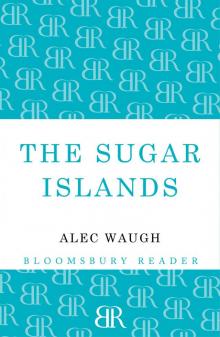 The Sugar Islands
The Sugar Islands No Truce with Time
No Truce with Time My Place in the Bazaar
My Place in the Bazaar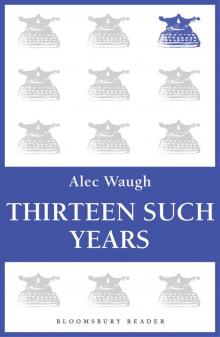 Thirteen Such Years
Thirteen Such Years The Loom of Youth
The Loom of Youth A Year to Remember
A Year to Remember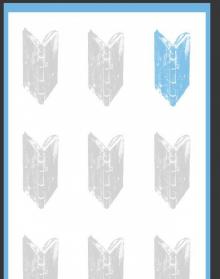 A Family of Islands
A Family of Islands Brief Encounter
Brief Encounter Guy Renton
Guy Renton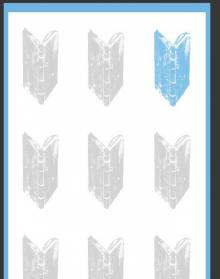 So Lovers Dream
So Lovers Dream His Second War
His Second War My Brother Evelyn & Other Profiles
My Brother Evelyn & Other Profiles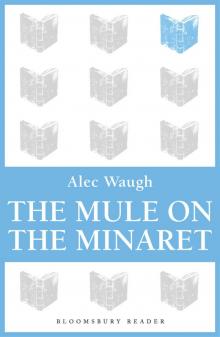 The Mule on the Minaret
The Mule on the Minaret Sir!' She Said
Sir!' She Said Nor Many Waters
Nor Many Waters The Fatal Gift
The Fatal Gift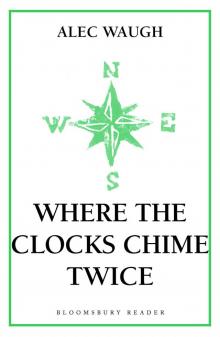 Where the Clocks Chime Twice
Where the Clocks Chime Twice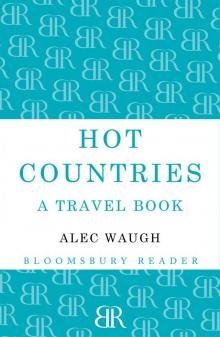 Hot Countries
Hot Countries Unclouded Summer
Unclouded Summer Island in the Sun
Island in the Sun